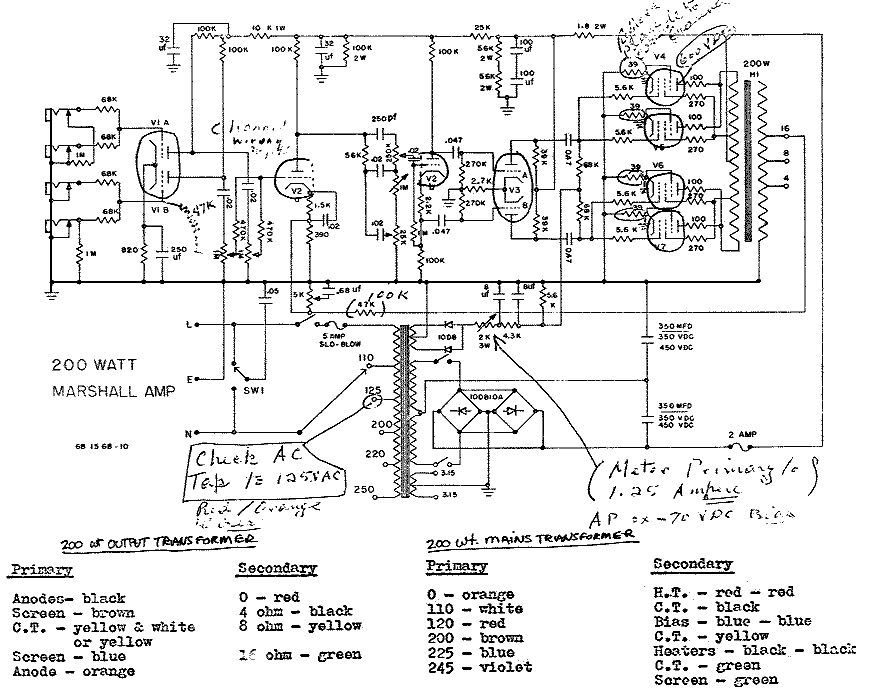Michael Tibes
Well-known member
I have a Marshall Major Top which needs some attention. I've done some research on the net, but all I was able to figure out yet is that these amps are kinda difficult because the design itself is beyond some specs (B+ @ 650V while the originally used KT88 tubes are speced for 450V http://dawkmods.proboards.com/index.cgi?board=AskDawk&action=display&thread=336) and this very high voltage leads to 'high voltage problems' which typically don't occur on 50/100W amps. There is a lot of talk, the usual guesswork of selfdeclared 'experts' and probably a few real experts which only want to state that they know but don't want to tell...
So my amp seems unmodified at first glance. It does blow a 4AT mains fuse occasionally (no matter whether it's being played or not), the labeling on the amp says this fuse should be 3A, the schematic and some folks on the net say it should be 5A?? If 5AT was right, then it's probably no surprise 4A blows, even when it's not played?

Does someone know what really should be done to these amps in order to improve reliability? The sound of the amp is already awesome as it is, it would be a real loss if it would blow up.
If someone knew what the 'Blackmore mods' were, it would be terrific... Just dreaming, this seems to be a well hidden secret.
This guy here http://dawkmods.proboards.com/index.cgi should really know about the amps, but the interesting sections in his forum are closed and he keeps writing his book where 'everything is going to be revealed'. I'd love to buy it - if it was finished...
Does anyone have experience with these manuals / DVDs http://www.leejackson.com/MasterSeries/index.html? Is it useful information?
Thanx,
Michael
So my amp seems unmodified at first glance. It does blow a 4AT mains fuse occasionally (no matter whether it's being played or not), the labeling on the amp says this fuse should be 3A, the schematic and some folks on the net say it should be 5A?? If 5AT was right, then it's probably no surprise 4A blows, even when it's not played?

Does someone know what really should be done to these amps in order to improve reliability? The sound of the amp is already awesome as it is, it would be a real loss if it would blow up.
If someone knew what the 'Blackmore mods' were, it would be terrific... Just dreaming, this seems to be a well hidden secret.
This guy here http://dawkmods.proboards.com/index.cgi should really know about the amps, but the interesting sections in his forum are closed and he keeps writing his book where 'everything is going to be revealed'. I'd love to buy it - if it was finished...
Does anyone have experience with these manuals / DVDs http://www.leejackson.com/MasterSeries/index.html? Is it useful information?
Thanx,
Michael


